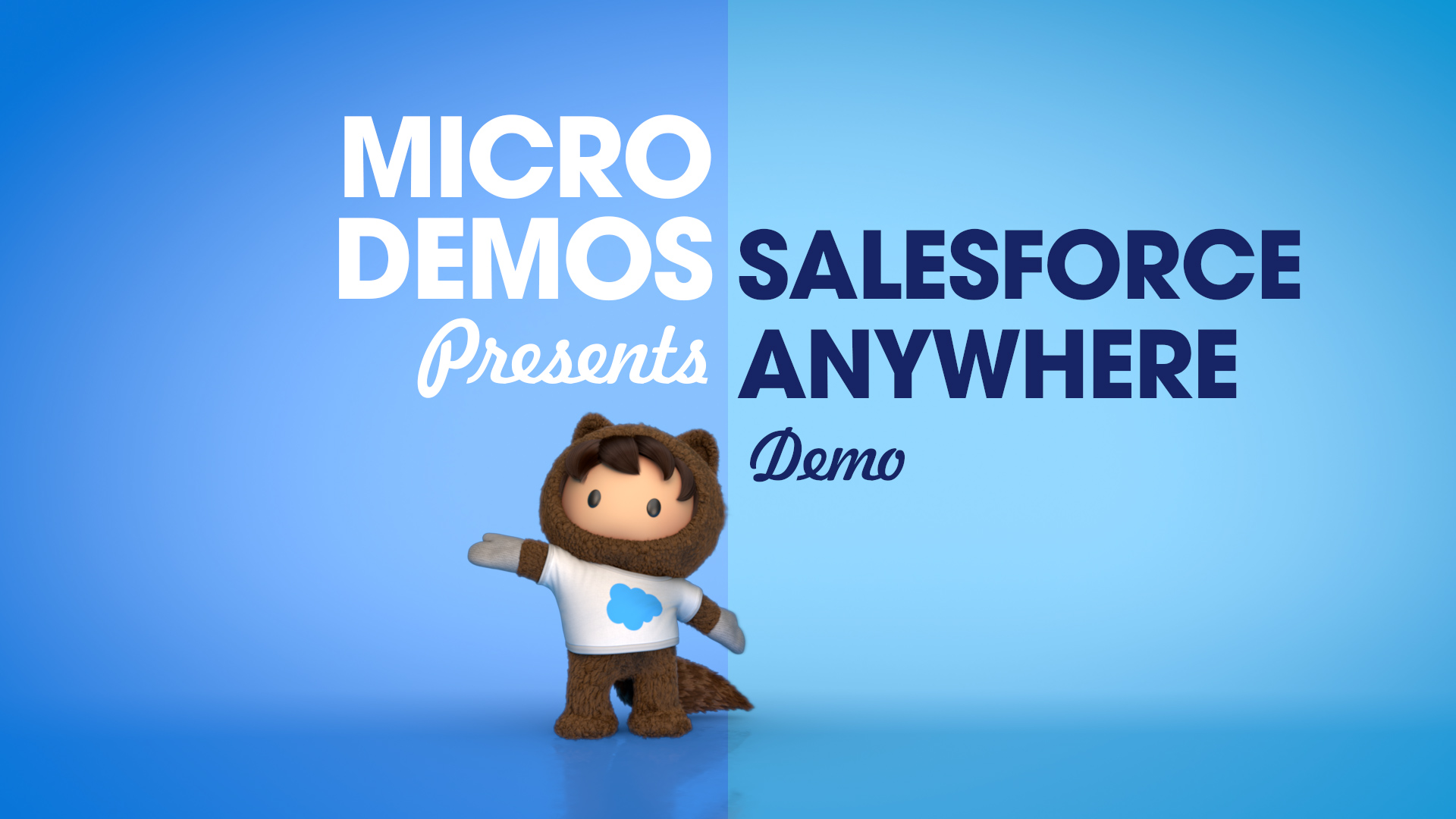Enhance the CRM Experience With Collaboration, Chat, and Work-From-Anywhere Technology



We're using the best Salesforce technology to improve the CRM experience — from anywhere.
The way we work changed overnight. Cloud-based customer relationship management (CRM) helped us stay productive, but there were so many other changes to how we work. Seminars became webinars. Zooms replaced in-person meetings. Employees became homeschool teachers. All of these changes, combined with rethinking how to better serve customers in light of a rapidly changing landscape, had leaders worried about productivity. They needed CRM to do more.
How do you keep your employees productive without burning them out? How can businesses continue meeting customer expectations when it’s much harder for employees to communicate and scale their efforts? How do we reduce the enormous strain and complexity an increasingly remote workforce puts on IT teams?
We heard our customers ask these very questions, and recognized we had to do more. Our CRM platform had to help our customers keep their employees productive, efficient, and connected to their customers during the pandemic, and beyond.
We’re taking the best of Salesforce technology to improve the CRM experience — from anywhere.
- Sell, service, market, and more from anywhere. Powered by Salesforce Customer 360, all of our best-in-class applications for marketing, sales, commerce, service, and IT make it easy to connect all of your teams on one platform, providing your employees with a single view of your customer, no matter where they are working.
- Collaborate from anywhere. With water cooler conversations a thing of the past, we know how important it is to keep your teams talking. We first addressed this challenge by introducing the Salesforce Anywhere app earlier this year to help teams stay up to speed with real-time alerts, collaborate in context with integrated chat, and stay productive with suggested actions powered by Einstein. And today, we’re launching Salesforce Anywhere, which brings together Quip documents, spreadsheets, and business process templates with the Salesforce Anywhere app features, so that unstructured data like call notes, account plans, and support swarm plans can be shared in context and never lost.
- Work from anywhere. Our app development tools allow organizations to build, manage, and scale employee apps and services quickly and securely.
- Data from anywhere. Customer experiences matter. And if customer data is in silos, your teams can’t deliver seamless experiences to your customers. With MuleSoft, you can integrate all data sources into Salesforce, and with Tableau, your teams can visualize and make sense of the data – unlocking insights to make better decisions, fast.
- Skill up from anywhere. For most of us, the way we engage and serve our customers has dramatically changed. If your employees need new skills — both technical and soft skills, they can use our free online learning tool Trailhead.
Watch and learn more about Salesforce Anywhere:
Future-proof your CRM experience
The pandemic won’t be the last disruption for your organization. Customer expectations will continue to push your business to evolve. Accordingly, you need a CRM that can flex with you and help you grow your business no matter the circumstance.
But is your CRM making you more productive or slowing you down? What about the data, processes, and workflows outside of your CRM? Is that information being captured to build a complete view of your customer?
Your team wants software tools that are simple, collaborative, and powerful. Let’s look at the four pillars a CRM must have to help you grow in an ever-changing environment.
1. Allows you to work from anywhere
Many of our customers had to shift to an all-remote workforce due to the pandemic and shelter-in-place orders. That means you need to enable your teams, from marketing to sales to commerce to service and IT, to work as one from anywhere.
Imagine a frustrated customer reaches your call center, and your service rep can see the customer’s entire history — from the emails he’s received, to the products he’s ordered. The rep can quickly resolve the issue because everyone at your organization shares a single view of the customer. And it’s not just about managing customer relationships, but employee relationships as well. If your IT department is flooded with requests from a newly remote workforce, they can quickly build and deploy employee apps to make it easy for them to manage any device for every employee — remotely.
2. Does the heavy-lifting for you
A modern CRM experience should help you work faster and efficiently. It needs to have artificial intelligence (AI) built-in to help your employees have an efficient daily workflow, with personalized guidance to take actionable next steps. Building apps and processes should be a snap with drag and drop, or low code tools anyone can use. You should be able to engage with it on both mobile and desktop. It should surface the right data to you — based on your preferences — with push notifications. And it should make essential tasks quick and easy.
For example, what if your sales reps were notified every time one of their deal stages got updated? And not only that, what if they automatically received a recommended action to drive your business forward? And what if employees received personalized, intelligent learning experiences tailored to every individual’s career goals?
3. Keeps business processes, data, communication, and people in one place
Between external documents, emails, and chat, a lot of data and processes can get left out of CRM. Key information and discussions aren’t captured, and reps end up spending lots of time switching apps instead of helping customers.
What if your CRM allowed you to integrate all types of data, either from legacy systems or other critical applications so that your employees aren’t toggling between applications, and instead have access to all the data they need in one place? With more data, communication, and processes in one place, CRM becomes the single source of truth for your business.
4. Collaboration is native and contextual
Closing a deal is never a one-person job; it requires a coordinated cross-functional team. There are engineers and product managers to answer customer questions, marketers to nurture prospects through the sales funnel, and executives and attorneys to weigh in on pricing and deal structure. After the deal is signed, service reps solve complex customer issues that can require case escalation and swarming to find solutions.
That’s why CRM needs collaboration to be a part of the system, not a completely separate system. Instead of switching between disparate systems such as CRM, email, and chat, in-context communication around a customer issue or prospect is essential.
For example, in the new CRM experience, your team can join a video call right from the Salesforce customer record itself instead of jumping into a separate application. They can even add comments directly to fields within the record instead of relying on email and chat to relay questions or feedback.
The way we work is changing constantly, and because of that, your CRM needs to change too. We are committed to creating this new experience that allows you to work from anywhere, makes collaboration a solution and not a pain point, and most importantly, does the heavy lifting for you.
This is how we see the future of CRM and the role it plays for our customers. Today, we are introducing Salesforce Anywhere, now with the power of Quip documents, spreadsheets and business process templates embedded to help you achieve this new real-time experience.
Learn more about how to accelerate your business with real-time data, built-in collaboration, and timely alerts.


























